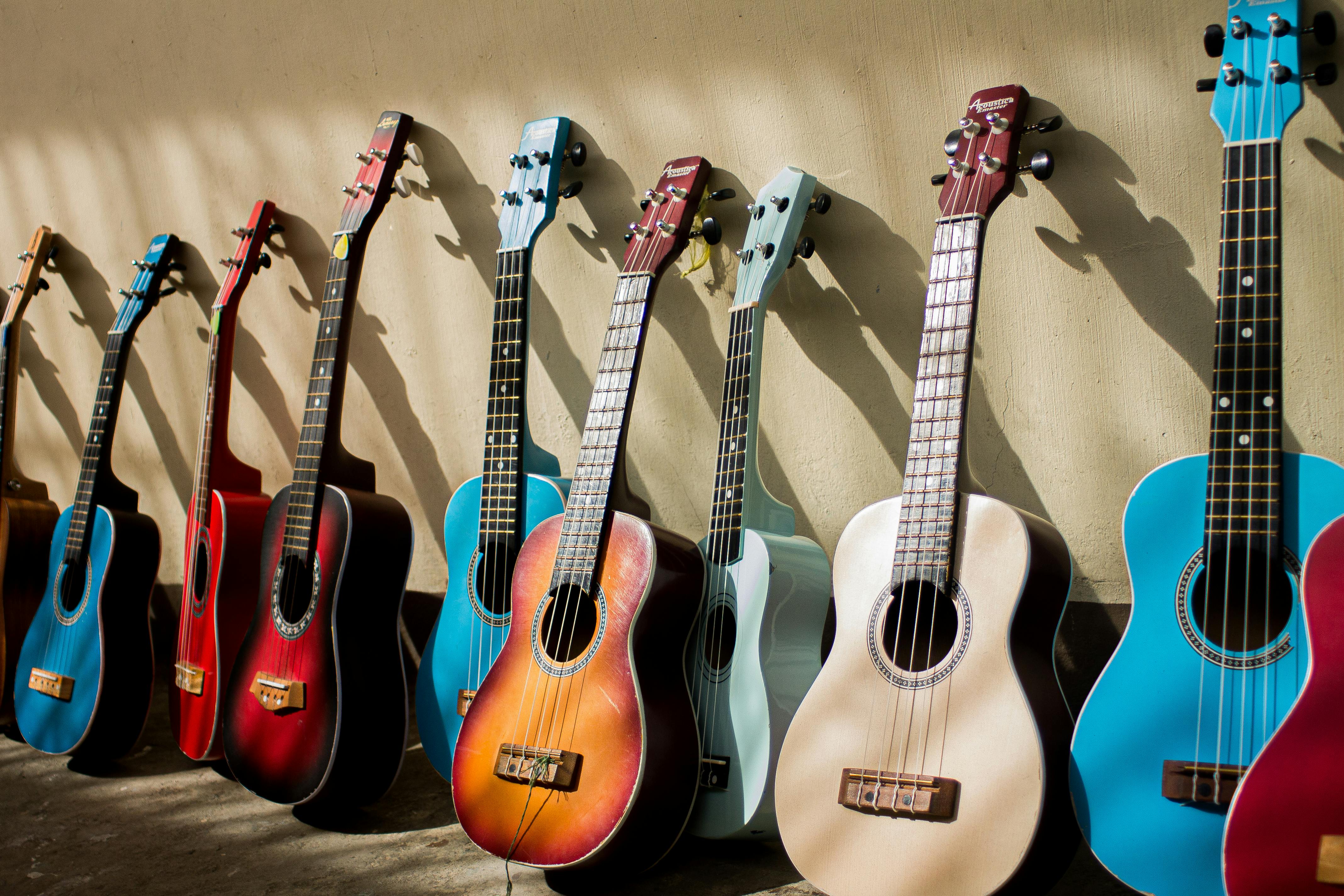Complete DIY Guide to Electric Guitar Fret Leveling, Crowning & Polishing (2025)
Discover how to master DIY guitar fret leveling crowning polishing with expert tools and clear steps. Upgrade your guitar today!

Ever wondered how pro luthiers get those glassy-smooth, buzz-free frets—and if you can really do it yourself? DIY guitar fret leveling, crowning, and polishing might sound intimidating, but turns out it's one of the most transformative upgrades any electric guitar can get. The right tools, proven step-by-step methods, and a few modern tricks make pro-level results possible—even in a spare-room workspace.
This 2025 guide combines respected tutorials, tool-by-tool comparisons, and community-tested techniques for every budget. Whether dealing with nickel or stainless-steel frets, or just aiming for a true mirror shine, this playbook lays out what works now. Everything’s here: what to buy, what to skip, real settings and processes (straight out of leading luthier shops), and what the DIY community has learned the hard way. Ready to get those frets perfect—without waiting weeks or risking a trip to the tech?
What You'll Learn:
- Full rundown of 2025's best DIY fretwork tools—pro vs. budget options explained
- Step-by-step how-to for leveling, crowning, and polishing frets at home
- Special tips for working on stainless steel frets with modern grits and polishing compounds
- Troubleshooting guide for common mistakes—flat spots, buzz, uneven frets
- Actionable community hacks, time-savers, and tool care tips built-in
- Expert advice on when to stop and call a pro
What You Need for DIY Guitar Fret Leveling, Crowning & Polishing
Getting professional fretwork results at home starts with matching the right tools to each task—leveling, crowning, and polishing—plus safe workspace prep. The big secret? You don’t have to spend a fortune, but some upgrades really do pay off.
Essential Tools & Materials
- Leveling Beam: Long steel/aluminum bar (250–300mm), usually with 400–1200 grit sandpaper. Guarantees a flat fret plane. Shorter fret files can work, but require extra care.
- Crowning File: Diamond or Z-file recrowns the flattened top after leveling. Pro options like the FretGuru Dagger and StewMac Z-file preserve fret shape while saving sanding time.
- Fret Rocker: Essential for spotting uneven frets that cause buzz. Small, straight 3-edge bar.
- Masking Tape or Adhesive Guards: Protects fretboard and guitar finish from scratches. New adhesive fretboard guards speed up prep and save cleanup time.
- Sandpapers/Micromesh: Range from 320 up through 12000 grit or 1μm for mirror finish. Fret erasers can jump between steps and cut polishing time.
- Polishing Compound & Buffing Tool: For that mirror shine, especially on stainless frets. Dremel tool with felt wheel (run at moderate RPM) or classic steel wool (#0000).
- Miscellaneous: Marker (for leveling), calipers (check fret height), superglue (reseating loose frets), brass brush (for file cleaning), neck support.
Pro vs. Budget Tool Comparisons
- Leveling Beam: StewMac or Crimson Guitars beams offer pro quality (straightness and weight). Budget: Home Depot aluminum bar—check flatness with straightedge before using.
- Crowning File: FretGuru Dagger and StewMac Z-file dominate pro shop use. Economy crowning files can work, but often leave chatter or uneven crowns.
- Polishing: Pro: Micro-Mesh pads up to 12,000 grit plus Dremel buffs. Budget: 800+ grit wet/dry sandpaper and #0000 steel wool. Both can shine but take longer with basic materials.
- Masking: Traditional blue painter’s tape is cheap and works, but adhesive fretboard masks (like StewMac’s) save time and stress, especially on fine woodboards.
Invest in a really good crowning file and leveling beam—they pay off in both time and results. The rest can be improvised with care if needed.
Workspace & Safety Prep
- Workspace: Stable desk or bench, neck rest, solid lighting. Lay a towel or yoga mat under the guitar to prevent slips/dings.
- Safety: Always wear a dust mask and safety glasses. Most fret filings are metallic and pose a risk if inhaled or in your eyes.
- Guitar Protection: Use masking or body guards, and cover pickups with painter’s tape to avoid magnetic dust stick.
Sourcing in 2025 is simple: major luthier suppliers (StewMac, Crimson, Philadelphia Luthier Tools), big-box hardware for bar and wet/dry paper, or reputable Amazon/AliExpress listings—just check reviews and confirm specs. For most DIYers, a solid mix of pro and budget tools delivers great results.
Step-by-Step DIY Guitar Fret Leveling, Crowning & Polishing Process
Here’s what actually gets results: a methodical workflow, pro shop sequence, and real attention to detail. This DIY guitar fret leveling, crowning, and polishing sequence is packed with luthier shop best-practice and real user experience.
Prep: Neck Straightness & Fret Seating
- Start by sighting down the neck under string tension. Use a notched straightedge or old-school feeler gauge to check relief.
- Adjust the truss rod so the neck is as straight as possible. Don’t force—quarter turns go a long way.
- Check every fret. Press each with a fingernail; if one pops, wick a drop of thin CA glue under, clamp with a block. Remove excess with waxed razor blade, per Dave Johnson (Premier Guitar's walkthrough).
Leveling Frets: Step-by-Step
- Mark All Frets: Use a Sharpie to cover fret tops fully. This reveals high/low spots as you remove material.
- Mask The Board: Lay down painter’s tape or adhesive guards. Avoid taped gaps—metal filings scratch rosewood fast.
- Leveling: Stick 400–600 grit sandpaper to your leveling beam. Drag lengthwise, covering entire fret run in even, light strokes. Don’t rush.
- Check Progress: The marker shows untouched low spots. Once all frets are evenly scuffed, stop—don’t over-file.
- Spot Check: Use a fret rocker across three-fret sections. Address any remaining high points with spot leveling or mini file.
Minimal material removal is the trick—just enough to flatten and clean the tops, keeping maximum fret height.
Crowning Frets: Restoring the Shape
- Mark fret tops again with a Sharpie—you want to maintain a thin, centered line through the process.
- Select a quality crowning file (FretGuru Dagger, StewMac Z-file, or a clean diamond). File gently, working each side and keeping lines even.
- Work in sections: divide each fret into eighths. Focus on one bit at a time, light strokes only. FretGuru’s Dagger file excels here (full FretGuru method).
- Goal: leave the thinnest possible marker line along the crown. That’s your contact point.
- Clean your file with a brass brush every few frets (stops clogging and chatter).
- Check with fret rocker again after each fret—spot crown or relevel only where needed.
Polishing Frets: Achieving a Mirror Finish
- Sandpaper/Micromesh Sequence: After crowning, use ascending grits—400, 800, 1200, 3000, then micro-mesh pads up to 12000 for a true mirror. For stainless frets, use diamond grit/micromesh (standard sandpaper clogs fast).
- Fret Erasers: Great shortcut—jump straight to 4K or 8K micromesh after, then finish with compound.
- Buffing: For ultra-fine shine, use felt Dremel wheel with metal polish (Menzerna, Flitz, or rouge) at low RPM. Avoid sitting in one spot—heat lifts frets. Manual: #0000 steel wool, rub along frets only.
- Cleanup: Remove all tape/guards, clear dust, wipe down with a damp cloth. Oil the fretboard if dry.
Throughout each step: count passes, work slow, and check your results. Uniform, shiny, round crowns with no flat spots equal good tone and low buzz. Stainless frets need extra patience—but don’t skip the high grits, that’s where the magic happens.
Community Best Practices & 2025 Updates for DIY Fretwork
Every year, home DIYers and pro luthiers push fretwork techniques further—2025 brings real-world hacks and specialty tips, especially for stainless steel frets. Here’s what the latest community wisdom reveals.
2025 Techniques for Stainless Steel Frets
- Tools: Always use diamond crowning files and micro-mesh pads (standard steel files and sandpaper load up instantly on SS frets).
- Polishing Workflow: Step from 800 grit to 4000, 8000, 12000 micro-mesh, finishing with Dremel and premium compounds. For quick jobs, combine fret erasers then buff.
- Heat Management: “Low and slow” on Dremel—anything too fast can unseat frets due to heat expansion. If unsure, stay manual.
Community Tips & Hacks
- Masking Hacks: Use adhesive fretboard masks (cut to fret slots) or painter’s tape doubled up. Pre-cut sets now save prep time and headaches.
- Cleanup Tricks: Use magnetic pickup covers (steel dust stays off finish), paintbrush or sticky-tack for collecting filings after sanding, and microfiber towels for finish protection.
- Counting Strokes: Match passes per fret during crowning and polishing—keeps each fret consistent and prevents overworking any trouble fret.
- Tool Maintenance: Clean files regularly with a brass brush and lubricate lightly with oil as needed. Upgrading pads/erasers between guitars stops cross-contamination.
- Ergonomics: Raise the neck with a wrestling dummy or yoga block so hands clear the table—this prevents wrist strain by the end of the job.
- DIY Alternatives: Some use sharpened hardware-store stainless files (polished smooth) as Z-file substitutes or even automotive paint polish for mirror buffing—results vary but can save cash for first-timers.
The best new practices—the ones that stick—come from hundreds of real repairs. Turns out, even small changes in prep, technique, and tool care can shave an hour off a fret job and deliver pro results on a budget.
Troubleshooting Common DIY Fret Leveling, Crowning & Polishing Issues
Even the best DIY efforts can run sideways—buzz, flat spots, uneven crowns, mysterious dead notes. Most rookie issues have simple fixes, especially with smart diagnosis.
Diagnosing Problems After Fretwork
- Unwanted Buzz or Dead Spots: Run the fret rocker across every fret, three-fret sections at a time. Any movement points to a remaining high (or now low) fret. Spot-level with a mini file as needed, mark again, and re-crown.
- Frets Not Level After First Pass: If marker remains on certain frets after a full run, check neck straightness AGAIN. Small truss tweaks may be needed. Repeat leveling only where marker persists, not the whole fretboard.
- Flat Spots on Crowns: Crown each fret until only a thin top line of marker ink remains; if too much is worn off, repeat with steady, lighter side strokes.
- Over-Leveled or Low Frets: Happens if too much is removed, especially at fret ends. If less than 0.025” height remains, consider a refret. No shame in stopping here—call a pro rather than risking the neck.
- Sharp or Rough Fret Ends: Smooth with dedicated end dressing files and follow with 800+ grit sandpaper or micro-mesh; bevel and round gently to match original angle.
Fixes for Common Mistakes
- Check neck relief before every phase—some issues only become obvious as tension changes.
- Always remark and re-mask as you transition from leveling to crowning to polishing; missing this step is the leading reason for missed flat spots or scratches.
- If polish won't remove scratches, step back a grit or two and repeat. Only move up once scratches are gone.
- If results still aren't clean or smooth, stop and reconsider: better to lose pride than shred another set of frets. There’s always a skilled tech nearby—that’s what Premier Guitar’s experts recommend for extreme cases (Premier Guitar’s shop advice).
The best fret jobs always come from knowing not just what to do, but when to stop or start over. That’s experience kicking in—and it saves guitars every year.
Conclusion
The right approach to DIY guitar fret leveling, crowning, and polishing doesn’t come down to expensive tools or sheer luck—it’s the smart sequence, patient process, and attention to detail that bring real results. Whether you pick pro-grade tools or get creative with affordable alternatives, what matters is the methodical leveling, consistent crowning, and careful polishing that transform playability and tone.
Practice and patience pay off. Double-check every step, don’t skip the fine grits, and remember: if results stall out or issues stack up, there’s zero shame in calling a luthier for backup. At-home fretwork is one of the biggest upgrades you can make—get it right, and the guitar comes alive under your fingers like never before.
Frequently Asked Questions
What tools do I need to level and crown guitar frets?
How do you polish frets after crowning?
Can I do fret leveling at home safely?
What’s the trick for stainless steel frets during fret leveling and polishing?
Key Takeaways
- A careful, step-by-step approach with the right tools makes pro-level fretwork possible at home.
- Diamond files, micro-mesh pads, and premium polishes are game-changers—especially for stainless steel frets.
- Community best-practices save time, prevent mistakes, and support success regardless of budget.
- Knowing when to back off or call a pro is as important as perfect technique.
Related Topics
Explore more articles in these topics to deepen your knowledge.
Related Articles

DIY Stratocaster Pickup Swap with Elevator Plate Mod for Extra Twang
Learn Stratocaster pickup swap with elevator plate with expert guitar instruction and practical techniques.

2025 Complete Guitar Care Routine for Acoustic & Electric Guitars
Master your guitar care routine 2025 with expert tips for string changes, cleaning, and humidity. Boost your guitar’s life—discover the full guide now!

Eliminating Ground Hum in Electric Guitars Step‑by‑Step Fix (2025)
Discover an electric guitar ground hum fix with step-by-step troubleshooting. Learn shielding, ground wire tips—quiet your guitar today!
Discover more insights from our blog to enhance your musical journey.
